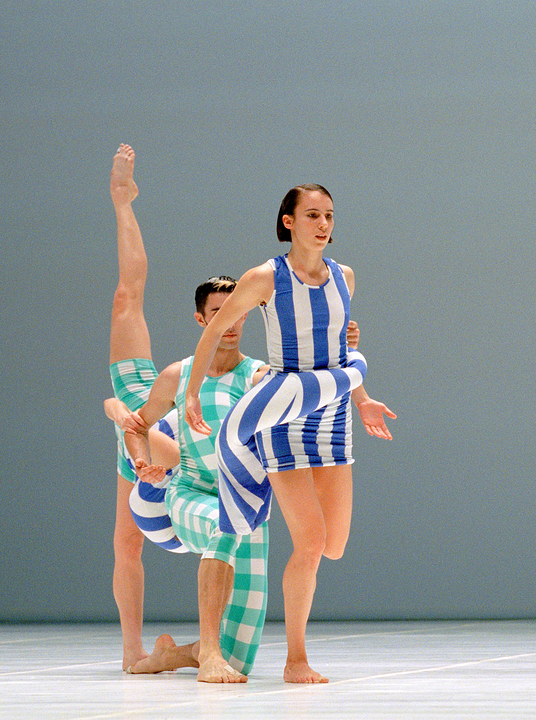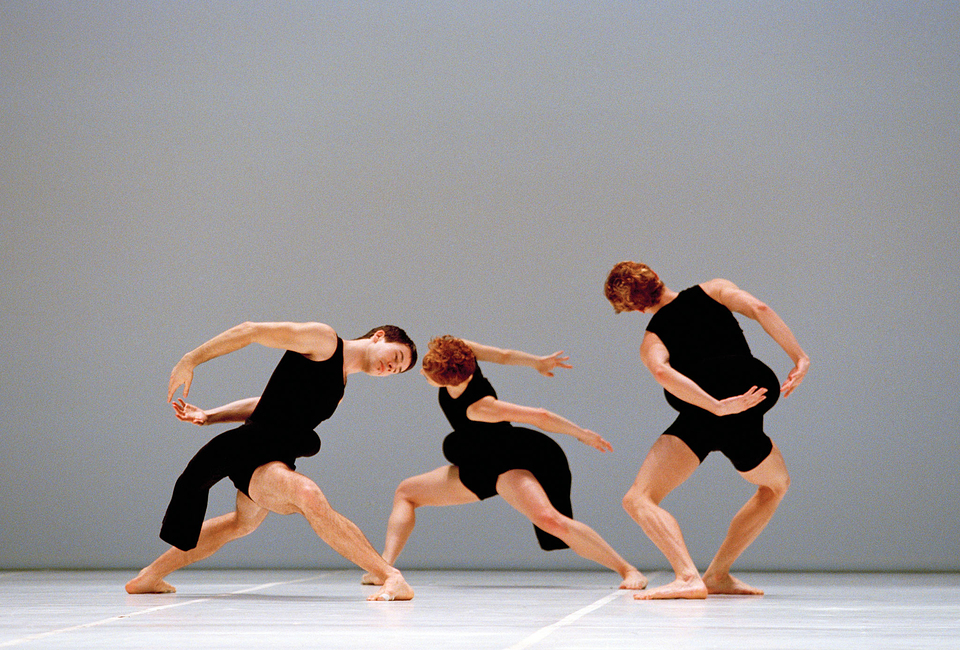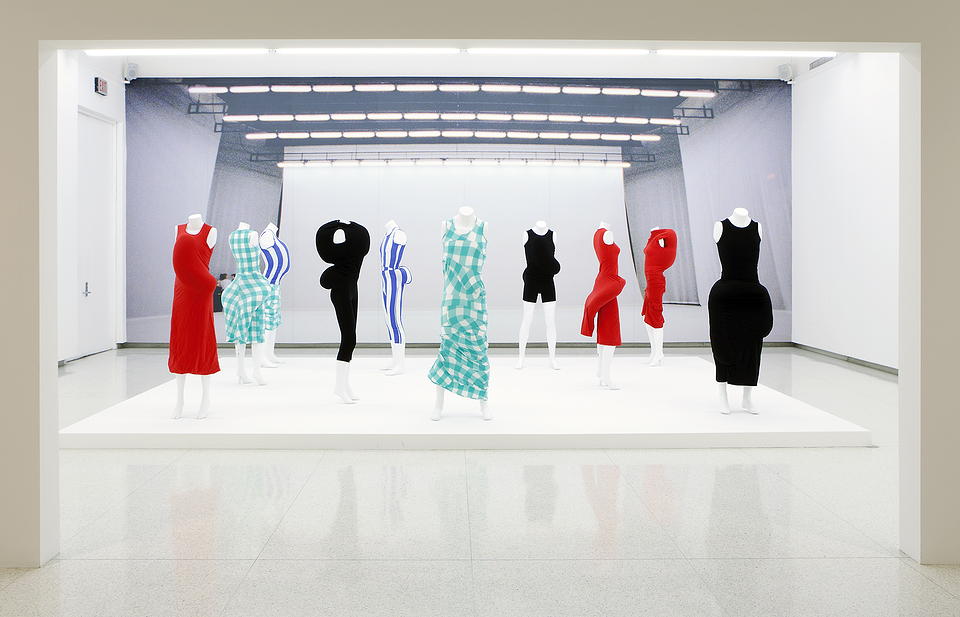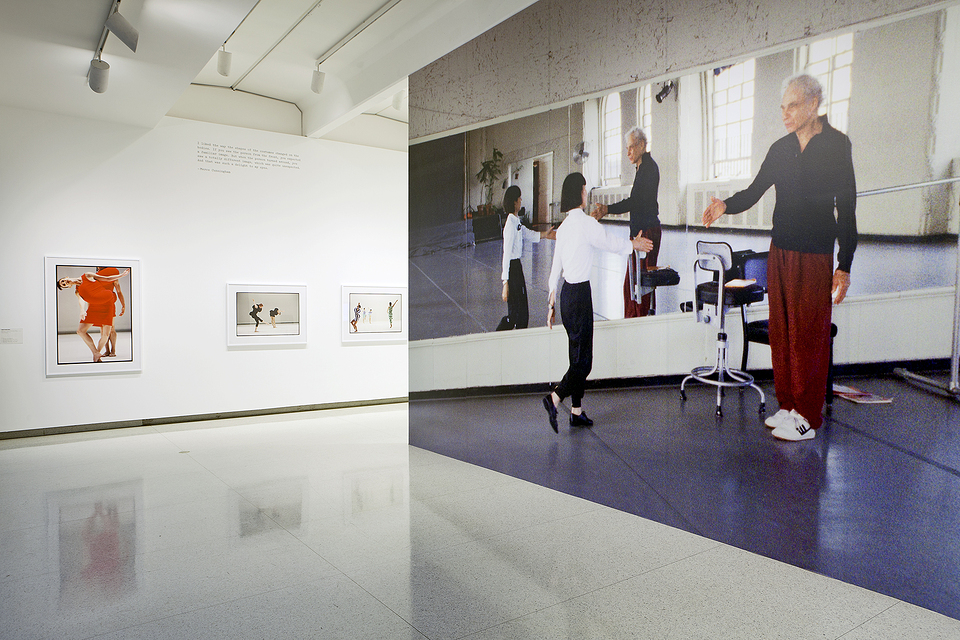Dress Meets Dancing Body
Rei Kawakubo's costumes for Merce Cunningham's company created a best-case scenario: a classic in the annals of modern dance, artistic collaboration and fashion history.




MERCE CUNNINGHAM, AS USUAL, KNEW WHAT HE WAS DOING. In the 1990s, the New York choreographer was actively generating movement using 3-D, motion-creation computer software called LifeForms to extend the kinetic possibilities of the dancing body. He had long relied on “chance operations” (dice throwing, I Ching coin tosses) to liberate his choreographic process from un- or subconscious expectations, but LifeForms further freed Cunningham to experiment with the body’s capabilities in space.
The choreographer was already renowned for “plotless” (to use a Balanchine term) works in which he juxtaposed legs, torsos and arms in ways that often appeared askew, without causality or apparent flow. With LifeForms, dancers’ body parts became even more distinct from and autonomous of each other, free of innately organic rules, patterns and directional expectations.
By 1993, argues Roger Copeland in his book Merce Cunningham: The Modernizing of Modern Dance, “movement motifs began to appear in Cunningham’s choreography that looked as if they’d been directly influenced by—indeed virtually ‘modeled on’—the inwardly curved shapes of the LifeForms wire-frame figures themselves.” Copeland also notes an “unprecedented degree of deformation, a tendency to twist and gnarl the body in ways that appear not so much mechanical as ‘deformed’,” in Cunningham’s LifeForms-generated choreography.
Meanwhile, across the ocean, Tokyo fashion designer Rei Kawakubo (founder of Comme des Garçons) was presenting collections that were also defying expectation. Decidedly unglamorous, her collections referenced ragged, tattered and ill-fitting clothes—what fashion curator Harold Koda described as an “aesthetic of poverty” that conjured notions of “conscious destitution” (“Rei Kawakubo and the Aesthetic of Poverty,” in Dress, 1985).
In 1996, she debuted her notorious “Body Meets Dress, Dress Meets Body,” show.* It was immediately dubbed the “lumps and bumps” and “Quasimodo collection” for putting the “perfect” figures of rail-thin models inside stretchy shirts, skirts and dresses embedded with irregularly shaped pads and pillows—bulky protuberances—that deformed their bodies.
Cunningham took notice. Never one to collaborate in any traditional sense, with his own interests in distorting the body (and audience expectations), he invited Kawakubo to create the costumes and décor for a new work, Scenario. He’d never worked with a fashion designer. She’d never worked with a dance company. (Scenario premiered October 14, 1997, at the Brooklyn Academy of Music.)
The dancework, Kawakubo’s singular costumes, even her staging—an all-white room made brighter with fluorescent lighting—have been captured in the Walker Art Center exhibition, Dance Works III: Merce Cunningham/Rei Kawakubo. The first artifact in the show, tellingly, is a wall-size image documenting the two icons’ initial meeting. The rest, as they say, is history.
In his book On Ugliness, “an exploration of the monstrous and the repellant in visual culture and the arts,” Umberto Eco parses the definitions of “beauty” in contrast to “ugliness”—a favorite pastime of artists, philosophers and other thinkers through the ages. “[W]e ought to distinguish between manifestations of ugliness in itself (excrement, decomposing carrion, or someone covered with sores who gives off a nauseating stench) from those of formal ugliness, understood as a lack of equilibrium in the organic relationship between the parts of the whole,” he writes.
Kawakubo’s costumes for Scenario possess the latter quality. With their humps and bunches—created by stuffing portions of the spandex fabric with down feathers—on the butt, around the chest, or across the back or stomach, they obviously distort the lean, muscular bodies of Cunningham’s dancers, who so often wore simple unitards. The “organic relationship between the parts” that we expect of dancers is out of balance, distorted.
Is this shocking? Unflattering? Ugly? Eco writes: “[A]lthough ugly things exist, art has the power to portray them in a beautiful way, and the beauty of this imitation makes ugliness acceptable”–more than acceptable, in the case of Scenario, especially after listening to Cunningham and the dancers talk about Kawakubo’s work, which posed numerous challenges.
One of the costumes didn’t have arms, so the woman wearing that piece had to be carried about the stage by her colleagues. Another dancer talks about how the blinding white of the Kawakubo’s décor left her feeling as though she was dancing in a microwave oven.
In short video interviews, which are part of the Walker’s exhibition, one dancer says her Kawakubo costume was like a hot and bulky parka, and that her view of the other dancers was often obscured. Another enthuses about how invigorating and fun it was for her try to move her legs in the long, tight spandex dress: she simply couldn’t do Cunningham’s choreography and had to adapt. Apparently one of the costumes didn’t have arms, so the woman wearing that piece had to be carried about the stage by her colleagues (another adaptation). A dancer talks about how the blinding white of the Kawakubo’s décor left her feeling as though she was dancing in a microwave oven.
In an interview with Cunningham archivist David Vaughn, the choreographer relates a story now often heard, about his perspective on Kawakubo’s work. From his studio one day, he looked out the window and saw a woman wearing a large winter coat, with a backpack on her back, and carrying a baby in a pouch across her front. (Sometimes, in the story, the person is a man with a oversize coat and backpack.)
How different, really, is such a deformation of the body from that of Kawakubo’s costumes? As Eco wrote, “the beauty of this imitation makes ugliness acceptable.” Arguably, in Cunningham’s mind at least, her work was simply art imitating life.
Dance Works III: Merce Cunningham/Rei Kawakubo is the third and final installment of the Dance Works series at the Walker. (A major Cunningham retrospective is scheduled for 2016.) With this third show, curator Betsy Carpenter has marvelously accomplished the difficult, if not near-impossible task of transforming once-animate but now-static artifacts into engaging encounters with captured ephemera.
Visitors are free to walk around the circumference of Kawakubo’s stage created with designers Takao Kawasaki and Masao Nihei —the stark white room—and study a selection of the original costumes, now worn by mannequins. There were three sets: green and white gingham and blue and white stripes (sometimes combined…gingham top, striped bottom); black; fire-engine red. Cunningham company musical director Takehisa Kosugi’s electronic score, “Wave Code A-Z,” booms, squeaks and reverberates in background “accompaniment.”
The exhibition also includes large photographs from performances of Scenario and taped excerpts from the work’s performance, which provide a better idea of how the dancers navigated the bulbous protuberances of their costumes (with tremendous beauty and aplomb, of course). Completing the creative, time and spatial connections between Kawakubo’s Scenario and her “Body Meets Dress, Dress Meets Body,” show is runway footage.
In a 1997 New York Times article, Kawakubo told Gia Kourlas that, after Cunningham approached her about creating costumes for Scenario, the choreographer’s work itself prompted her costume designs. “I was excited about the prospect of the shapes being broken down by movement and new forms being created. When I saw the rehearsal for the first time, I was fascinated by how the shapes changed and came alive.”
Ugly or not, the costumes created a best-case scenario; a classic in the annals of modern dance, artistic collaboration and fashion history, available for viewing once again.
Exhibition details, links and related events: Dance Works III: Merce Cunningham / Rei Kawakubo is on view at the Walker Art Center through March 24. The Walker is hosting a “A Think & A Drink” discussion and tour of the show on February 22.
According to Voguepedia, the “Body Meets Dress, Dress Meets Body,” collection was shown in October of 1996, with Kawakubo subsequently creating costumes for the premiere of Scenario in October 1997. According to Walker Art Center curator Betsy Carpenter, however, Kawakubo “initially declined [to create costumes for Cunningham) but changed her mind while creating her notorious spring/summer 1997 ‘Body Meets Dress, Dress Meets Body’ collection.” *